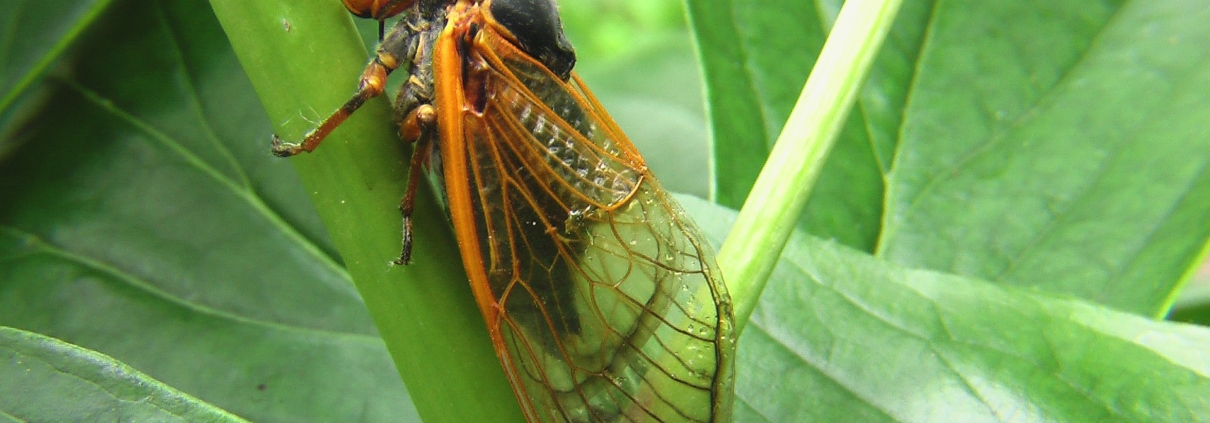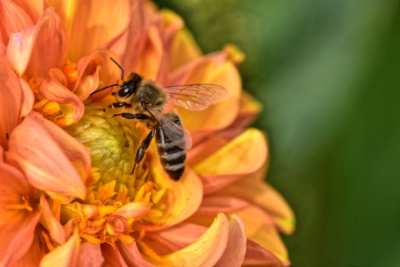Breaking the Cycle of Cicada Slander
It’s time to look at this natural phenomenon as a feel–good show and not a horror movie
Right now, countless (millions to trillions, depending on who you talk to) cicada nymphs in the mid-Atlantic and Great Lakes regions are waiting for the ground to thaw so that, once the ground temperature is about 64°F, they can emerge and find mates. They comprise Brood X, a periodical cicada brood we last saw in spring 2004.
If you live in one of these areas, perhaps you’ve already seen articles, social media posts and tv segments about this brood, and you’ve probably noticed they’re peppered with words like swarm, infestation and ear-splitting. Cicadas often get confused for locusts, prompting references to biblical plagues and questions about cicada’s impact on crops and lawns. Even when articles concede that cicadas are harmless, they still fixate on their appearance and sheer numbers.
It is true that Brood X (pronounced “Brood 10” and also known as the “Great Eastern Brood”) has, out of the 15 active broods of periodical cicadas, the largest range and concentration. It’s also true that the mating calls of male cicadas, when measured collectively, can reach 100dB (the equivalent of a lawnmower or motorcycle). Additionally, it’s true that if we take the time to get to know our new cicada neighbors, we’ll find that there’s a lot to appreciate.
What’s so special about periodical cicadas?
In North America, cicadas, insects in a global superfamily with 3,000 species, are classified into two groups: annual and periodical. The nymphs of both develop underground, drinking sap from the roots of trees, emerging as adults to molt and produce young. Annual cicadas remain underground for two-five years but are so named because adults of their species can be found above ground every summer. Annual cicadas typically have smaller populations and are more adept at fleeing from predators. The vast majority of the world’s cicada species are annual cicadas. Outside of eastern North America, all cicada species appear every year, so the distinction between annual and periodical isn’t even made.
There are seven periodical cicada species, which emerge as adults in 13 or 17-year intervals. If you live in a region that is home to these species then you are privy to one of the world’s most unique natural adaptations. Because periodical cicadas are not quick or agile, safety from predators is found in numbers.
If the 13 and 17-year cycles seem like random numbers, there may be a reason for it. It has been suggested that cicadas emerge on those schedules (telling time by sensing intervals of fluid traveling in roots) because it’s difficult for predator species to similarly adapt long, prime-numbered lifecycles. Math and biology working together.
In defense of cicadas
While large and awkward looking, cicadas pose no threat to humans, and their impact on vegetation is minimal. Only young trees are at risk of being over-grazed, while they help prune older trees. Large broods are beneficial to soil health, as they infuse nutrients when they die and decompose. If planting saplings during a year when a cicada brood is expected, it’s advisable to wrap the young trees in netting, or to wait until late summer to plant them. Given the minimal impact that they have on plants, applying pesticides is unnecessary and such can harm cicada populations, as well as the animals (both wildlife and pets) that may eat them.
Appreciating insect lifecycles
If you live within Brood X’s limited range, take some time this spring to appreciate one of nature’s most fascinating spectacles. Nymph cases will litter the sidewalks, flying adults will always appear ready to crash land and the mating calls will punctuate the spring night but this once in a decade emergence is a reminder that nature in our back yards and city parks can be as amazing as anything in the Amazon or Antarctic.
If you’re unlucky and out-of-range, there are likely other insects in your area with unique and under-appreciated lifecycles. For instance:
- Aphids can give birth to live young. In temperate areas, this typically happens throughout the summer, and then some species will lay eggs in the fall, when resources are scarcer. While humans view aphids as an agricultural pest, farmer ants depend on their secretions for food. These ants will collect aphid eggs and protect them throughout the winter, to ensure that they have a honeydew stock come spring.
- In the pupal stage, most insects are immobile, living underground or relying on camouflage for protection. Mosquito pupae, however, develop in open water. To counteract being in plain sight, mosquito pupae can sense danger and dive or swim away from predators. Once they reach adulthood, mosquitos become important pollinators to some plants with small, complex flowers, namely rare orchid species.
- Many butterfly and moth species can undergo diapause, which is the act of delaying development in response to subpar environmental conditions. Most species will wait a season or year before emerging, but yucca moths, which rely on Joshua trees and other yucca varieties, have been known to enter diapause for up to 30 years when faced with harsh enough temperatures or yucca scarcities.
By 2038, when Brood X next appears, the way that we talk about cicadas will hopefully have changed. Ensuring that today’s youth gain an appreciation for insect lifecycles can help. Download our Invertebrate Life Cycle Game for an activity that you can conduct with your families or with students and youth groups that visit your workplace.



